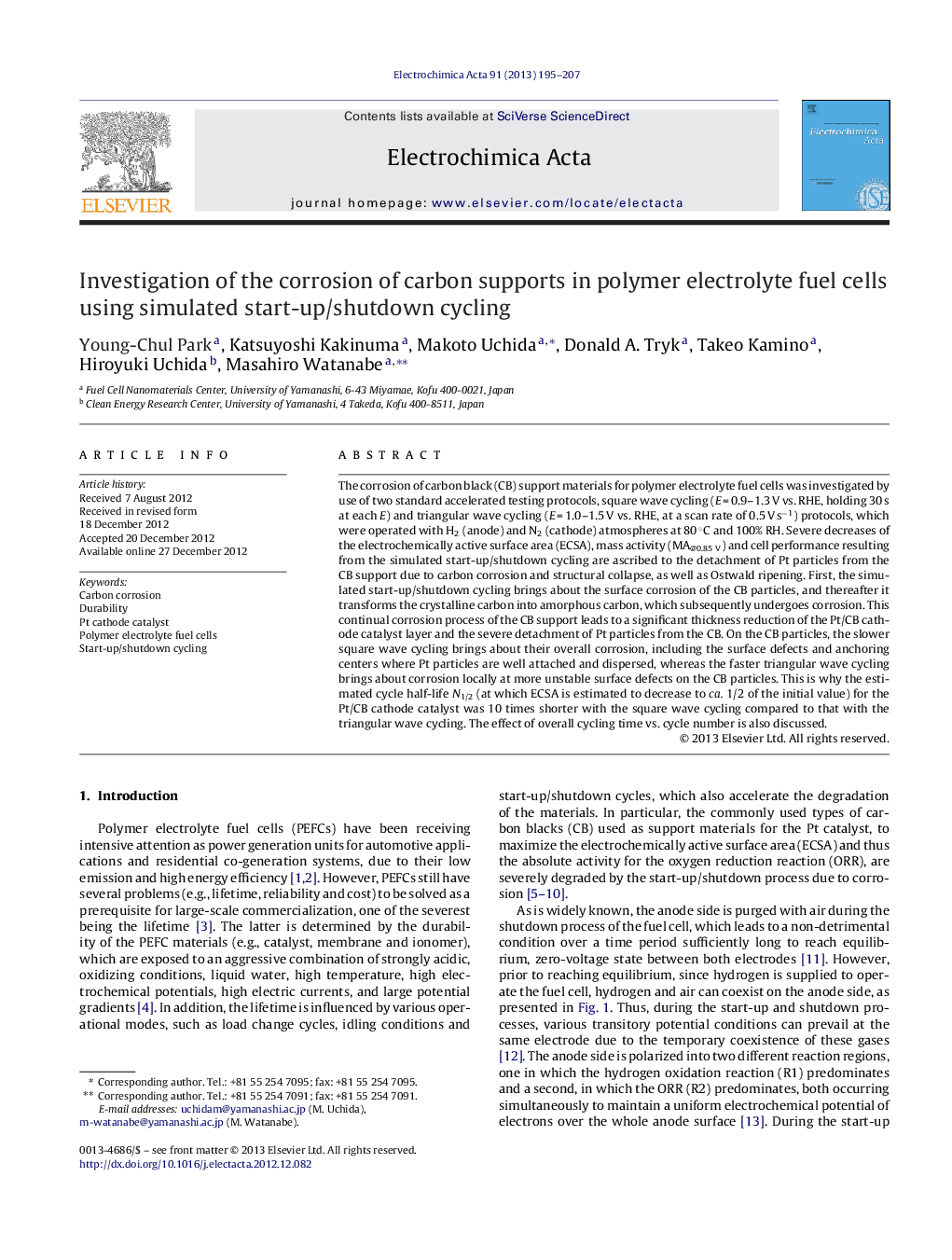| کد مقاله | کد نشریه | سال انتشار | مقاله انگلیسی | نسخه تمام متن |
|---|---|---|---|---|
| 186993 | 459631 | 2013 | 13 صفحه PDF | دانلود رایگان |

The corrosion of carbon black (CB) support materials for polymer electrolyte fuel cells was investigated by use of two standard accelerated testing protocols, square wave cycling (E = 0.9–1.3 V vs. RHE, holding 30 s at each E) and triangular wave cycling (E = 1.0–1.5 V vs. RHE, at a scan rate of 0.5 V s−1) protocols, which were operated with H2 (anode) and N2 (cathode) atmospheres at 80 °C and 100% RH. Severe decreases of the electrochemically active surface area (ECSA), mass activity (MA@0.85 V) and cell performance resulting from the simulated start-up/shutdown cycling are ascribed to the detachment of Pt particles from the CB support due to carbon corrosion and structural collapse, as well as Ostwald ripening. First, the simulated start-up/shutdown cycling brings about the surface corrosion of the CB particles, and thereafter it transforms the crystalline carbon into amorphous carbon, which subsequently undergoes corrosion. This continual corrosion process of the CB support leads to a significant thickness reduction of the Pt/CB cathode catalyst layer and the severe detachment of Pt particles from the CB. On the CB particles, the slower square wave cycling brings about their overall corrosion, including the surface defects and anchoring centers where Pt particles are well attached and dispersed, whereas the faster triangular wave cycling brings about corrosion locally at more unstable surface defects on the CB particles. This is why the estimated cycle half-life N1/2 (at which ECSA is estimated to decrease to ca. 1/2 of the initial value) for the Pt/CB cathode catalyst was 10 times shorter with the square wave cycling compared to that with the triangular wave cycling. The effect of overall cycling time vs. cycle number is also discussed.
► Pt surface area, mass activity decreased due to simulated start-up/shutdown cycling.
► Changes are ascribed to detachment of Pt via carbon corrosion, structural collapse.
► Cycling causes surface corrosion and amorphization of the carbon black particles.
► Amorphized carbon black then corrodes more easily.
► Corrosion also occurs significantly in the interior of the carbon particles.
Journal: Electrochimica Acta - Volume 91, 28 February 2013, Pages 195–207